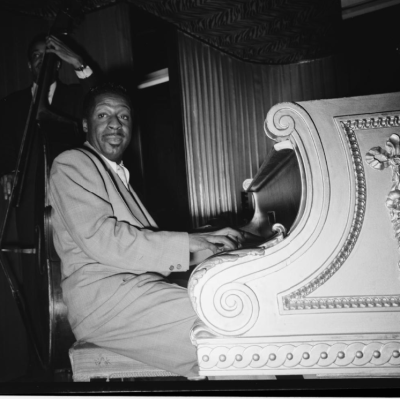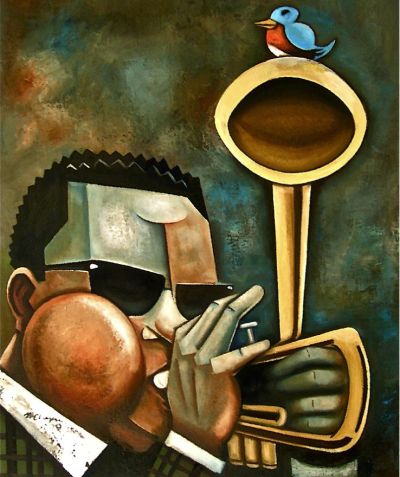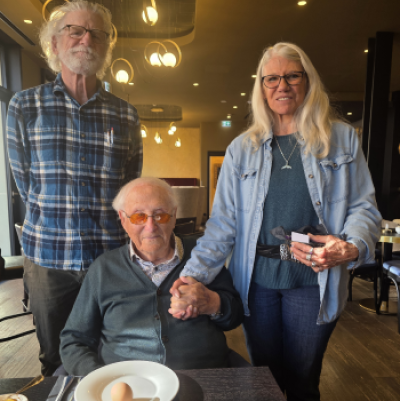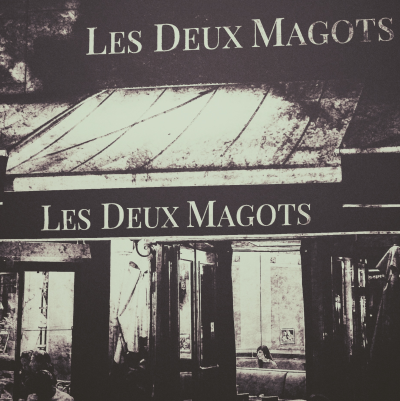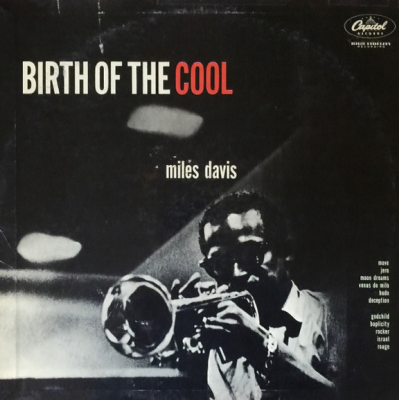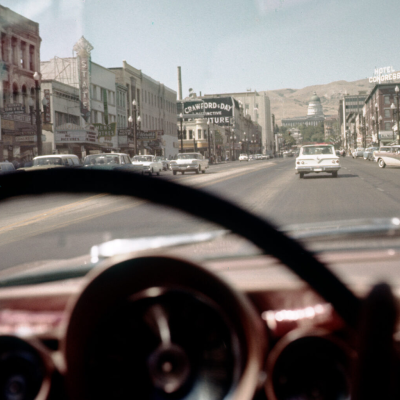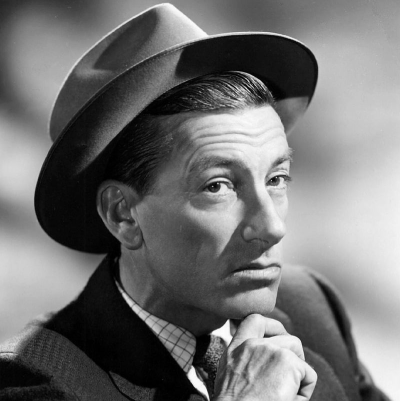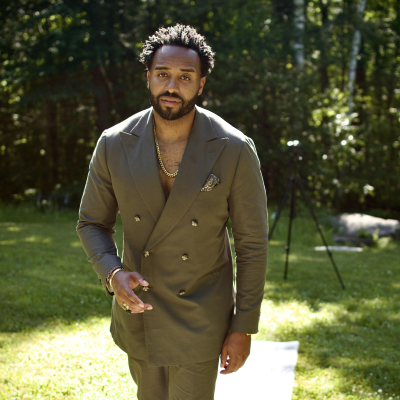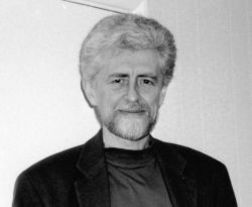
Charlie Parker has been idolized by generations of jazz musicians and fans. Indeed, his spectacular musical abilities — his blinding speed and brilliant improvisational style — made Parker a legend even before his tragic death at age thirty-four.
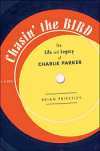 In Chasin’ The Bird, Brian Priestley tells Parker’s life story, from his Kansas City childhood to his final harrowing days in New York. Priestley offers new insight into Parker’s career, beginning as a teenager single-mindedly devoted to mastering the saxophone, to his first trip to New York, where he washed dishes for $9.00 a week at Jimmy’s Chicken Shack, a favorite hangout of the great pianist Art Tatum, whose stunning speed and ingenuity were an influence on the young musician.
In Chasin’ The Bird, Brian Priestley tells Parker’s life story, from his Kansas City childhood to his final harrowing days in New York. Priestley offers new insight into Parker’s career, beginning as a teenager single-mindedly devoted to mastering the saxophone, to his first trip to New York, where he washed dishes for $9.00 a week at Jimmy’s Chicken Shack, a favorite hangout of the great pianist Art Tatum, whose stunning speed and ingenuity were an influence on the young musician.
Priestley sheds light on Parker’s collaborations with Dizzy Gillespie, Max Roach, Bud Powell, Mary Lou Williams, and Thelonious Monk, and he illuminates such classic recordings as “Salt Peanuts” and “A Night in Tunisia” and Parker’s own compositions “Shaw ‘Nuff” and “Yardbird Suite” — music which defined an era.
Priestley also gives us an unflinching look at Parker’s dark side — the drug abuse, heavy drinking, and tangled relations with women and the law. He recounts the death of Parker’s daughter Pree, who was only two-and-a-half years old, and Parker’s own death at thirty-four, in such wretched condition that the doctor listed his age as fifty-three.#
In a February, 2006 interview with Jerry Jazz Musician publisher Joe Maita, Priestley discusses the life of Charlie Parker.
*
photo by Pete Armstrong; Driggs Collection
Charlie Parker and Gene Ramey, Kansas City, 1940
“Everything had a musical significance for him. He’d hear dogs barking, for instance, and he would say it was a conversation — and if he was blowing his horn he would have something to play that would portray that thought to us. When we were riding the car between jobs we might pass down a country lane and see the trees and some leaves, and he’d have some sound for that. And maybe some girl would walk past on the dance floor while he was playing, and something she might have would give him an idea for something to play on his solo. As soon as he would do that, we were all so close we’d all understand just what he meant.”
– Gene Ramey
*
_______________________
JJM You originally published this book in 1984 under the title Charlie Parker. In the preface to the 2005 edition, you wrote, “My own leanings toward composition and arrangement (and the consequent work of not wanting to throw away anything) led me to preserve virtually all of my first text — except where it has since turned out to be inaccurate — and add new layers, more akin to overdubbing than improvising.” What was inaccurate in the 1984 edition?
BP It is probably the case of more details. For instance, there is some confusion concerning the chronology of some of Parker’s movements during the forties. It is still not clear even now, to some extent, exactly when he left Jay McShann’s band, and how long he had been back in Kansas City after stopping off in New York, or when it was that Billy Eckstine tried to reach him about joining his big band. Dates are a bit hard to come by in that particular period.
JJM So when you suggest that things may have been inaccurate in the book’s first edition, you are saying these were fairly trivial issues…
BP I think so, yes. I don’t remember having any major re-think about aspects of his career or achievements. There may be slight differences in emphasis, but I wasn’t aware of any major inaccuracy.
JJM When did you first understand the importance of Charlie Parker’s music?
BP I suppose that was a process that came to me during my late teenage years. As I also explain in the preface that you quote me from, I wasn’t aware of Charlie Parker until his death, when I heard somebody play a track of his on BBC Radio. I am sure that was the first time I actually heard him. If I heard anything of his before, it had not gotten through to me. In the subsequent years, when I was a teenager, I got to know other musicians in the Manchester, England area — where I grew up — who tried to play the same sort of music Parker did. I knew someone who played the alto saxophone, and he had a lot of Charlie Parker records, so it gradually sank in that he was somebody who was not only good to listen to, but who had been significant in the development of jazz music to that point.
JJM Were you into Lester Young before Parker, or, were there others you recall having an interest in?
BP I was born in 1940, and I had some background in classical music, so the first things I could appreciate were post-bebop west coast jazz, as well as some of the New York groups of the mid-fifties like the Modern Jazz Quartet. I could get a handle on understanding this music rather than just feeling it or being drawn to it in some way. It was a slight step backwards chronologically to take on people like Charlie Parker and Dizzy Gillespie, and then finding out about people before them like Lester Young or Coleman Hawkins, and then again before them, Louis Armstrong. So, I was learning about jazz backwards.
JJM Parker’s father, Charles Parker, Sr., was a railroad porter who Parker seldom saw. Consequently, his mother Addie raised him pretty much on her own, in a home he shared with John Parker, the son of his father and a white woman. What led to his interest in music?
BP That question is quite difficult to answer. In Ross Russell’s book, Bird Lives!: The High Life and Hard Times of Charlie (Yardbird) Parker, he implies there was a piano in the Parker household, but this is really just guesswork, so we don’t know this for sure. So, it is likely that he found out about music in a fairly sidelong way. The absence of any statement about his getting some kind of musical input directly from his father in the few interviews he did tells a lot. I believe he heard music in school when he was still attending school, and met other people there who were into playing — some of whom he continued to play with after he dropped out of school. Then he started hanging around the nightclubs, taking in a lot of music just by using his brilliant ear.
JJM As a young man, he often went to the clubs of Kansas City alone. He had a lot of freedom as a child
BP Part of what we know about his childhood comes from one of the only interviews done with his mother after his death. In order to keep the family afloat financially during the early depression years, she worked late nights as a cleaner and even took on lodgers, so I suppose she either turned a blind eye to the fact that Charlie, in his very early teens, would be going out on the town, or she did know about it and almost condoned it in some way.
JJM He also apparently sang in the school choir as a young boy. Did he ever sing in public after that?
BP Not in public, and not apart from the three syllables on the vocal to “Salt Peanuts .” I don’t think singing ever really grabbed him, whereas playing music in the school marching band did. In an interview late in his life, he complained humorously that it wasn’t very much fun playing certain horn parts in marching band arrangements, because he was just playing backing harmonies. But that probably cultivated his ear for music, and it gave him an idea about expressing himself. It isn’t likely that he felt the same way about vocal parts.
JJM One of his heroes was Lester Young, and stories are told about how he would sneak into the Reno Club and hustle up the stairs into the balcony to hear him play with Count Basie’s band. What sort of impact did Lester Young have on Parker?
BP He must have been impressed by the fact that Lester was all about music. He had a personality, but it was a deliberately reticent personality unless he was socializing around other musicians, whom we have learned he was more open with. But it seems Lester didn’t make the time to relate to the general public — even in the clubs where the early Basie band was playing, or even with people who would be from the same social background. That may have influenced Parker to some extent.
Regarding his musical influence, even as a very young man he must have realized that Lester Young was a key musician on the Kansas City scene at the time, and a key component of that early Basie band. He sounded different from any other saxophonists Parker was hearing through records and radio broadcasts. At one point in the late thirties he said that his favorite saxophonist was Leon “Chu” Berry, who was the star player in the Cab Calloway band, and in fact, Parker named his son after Berry. Because he was already listening to music widely, he must have realized how special and how different Lester Young was, and that may have inspired him to seek an equivalent level of individuality.
JJM In 1949, the journalists Michael Levin and John S. Wilson said that Charlie Parker, “…discovered jazz, heavily disguised as Rudy Vallee.” What was that all about?
BP I have some reservations about how true that is. The story is that the first music Charlie admitted to noticing on radio broadcasts was that of Vallee, the white singer and saxophonist who was very big in the late twenties and early thirties. I suppose it figures that he would have heard him on the radio because he was one of the mainstream, popular artists of the day. But it did strike me that in some other later interview segments, Parker talked about having heard the saxophone playing of the twenties by another white musician named Rudy Wiedoeft — who it is said Vallee changed his first name from Hubert to Rudy in his honor — and I wonder if Levin and Wilson may have possibly gotten those guys mixed up.
JJM Of a famous jam session Parker participated in during the summer of 1936 that ultimately changed his life, you wrote, “He went so far as to sit in with the major-league men of the Basie band, doubtless with some nodded encouragement from Lester Young. But Basie’s recently returned drummer, Jo Jones, knew of Parker at least by reputation and, waiting till Charlie had just taken off on his solo flight, gunned him down in no uncertain manner, with a make-believe weapon reminiscent of the famous amateur-night verdicts at Harlem’s Apollo Theatre. Lost in concentration on the music, Charlie was abruptly halted by the resounding crash of the drummer’s cymbal thrown at his feet. ‘It fell with a deafening sound,’ said Charlie’s future colleague Gene Ramey, a fellow participant at this sesson, ‘and Bird, in humiliation, packed up his instrument and left.'” The ridicule he felt ultimately led to a self-imposed exile for three months. What do you know about this three month period, during which time he lived in Eldon, Missouri?
BP It is something that he talked about specifically in a 1950 interview with Marshall Stearns and John Maher, and it was also mentioned in Inside Bebop, a late-forties book by Leonard Feather that featured some biographical information about musicians he was writing about. The interview Parker did with Stearns and Maher seems to take a lot of its cues from Feather’s book because when they asked Parker about his time in Missouri, one of the interviewers said, to paraphrase, that Leonard Feather said you spent a summer season of three months playing in the Ozarks.
As far as we know, this time was spent with the Kansas City bandleader George E. Lee, who was very popular in the early twenties. Lee’s sister Julia played in his original band, but I believe she had gone out as a solo by then, and her brother was picking up local musicians for a particular engagement — or in this case for a summer season. So, Charlie was working with other comparative youngsters who knew what they were doing harmonically, particularly the piano player and the guitar player. Up to that point he was probably doing everything by ear, and because he had such a good ear had progressed a long way, but, he may have run up against a brick wall if he didn’t have input from people who could actually show him how things worked on the piano. At this time, apparently, Parker picked up some ability to work out his ideas on the piano. While not much has been made of this, it has been confirmed by people like Dizzy Gillespie and Max Roach that Charlie knew his way around the piano keyboard by this time in his life.
JJM He must have done a lot of work in Eldon, because when he came back to Kansas City, he was a much improved player — good enough to eventually join Jay McShann’s band. Whose playing was even remotely close to Parker’s in Kansas City at this time?
BP Dates are a bit hard to be absolutely specific about, but one of the people that Charlie Parker worked with in that period immediately following his return from the summer season in the Ozarks was Buster Smith, a local alto saxophonist and arranger who had been a member of the early Basie band. There are one or two short bits of Smith on record in the late thirties and in 1940, playing with other Kansas City-based musicians — one of whom was the pianist Pete Johnson. Even though he only played three or four short solos, Buster Smith’s playing sounds like an early version of what we associate with Charlie Parker.
JJM Did he face much criticism while he was a member of McShann’s band?
BP Because he was a member of a band that played the popular big band style of the time, he was pretty well accepted by the other band members — as well as everybody who heard him. If you mean criticism in the negative sense, I think that only came up later. The people who heard him in the context of the Jay McShann band were all very impressed, to the point where somebody compared him to what Lester Young had done for the Basie band. So, he felt he was the equivalent of Young, and that he was playing like Lester Young, but twice as fast.
JJM So, the criticism of his work didn’t really come until after he returned to Kansas City from New York?
BP I think that is the case, yes.
JJM An influential Kansas City based Downbeat writer, Dave Dexter, was not particularly a fan of Parker’s
BP I wouldn’t want to emphasize this too much, but from what I gather, Dexter didn’t get along well personally with Parker, and he was an early example of the sort of person Parker himself didn’t have much time for because he felt Dexter had too high of an opinion of himself. Parker made this clear to him and played practical jokes on him, and forever after, Dave Dexter’s comments about Charlie Parker were fairly mean-spirited. But in the very early days, he wrote enthusiastically about the Jay McShann Band, and didn’t exclude Parker from his praise in any way.
JJM Parker left McShann’s band — and Kansas City — for New York, where he ended up working at a restaurant called Jimmy’s Chicken Shack, where Art Tatum played piano
BP His motivation was to see what it was like in New York. I don’t think he was particularly dissatisfied about working in Kansas City with McShann, although if you read some of the interviews with McShann himself, he and some of those in his band were already having problems with Parker because of his unreliability. So, it may be that Parker felt it was time for a change of scenery, and New York and its music offered that. He didn’t do much playing while he was there, partly because of the union restrictions for musicians who moved to New York, and partly because he may have underestimated how high the level of musicianship was there. As a result, on that very first New York trip of several months, he didn’t do very much playing.
JJM As you say, there weren’t many work opportunities for a new musician in New York City ..
BP Well, that depends. If he had come to New York with a bigger reputation, he would have had more opportunities, but I suppose he just went there on “speculation,” and without having laid any groundwork except having made sure that he could stay for free for awhile at Buster Smith’s apartment.
JJM When did he begin playing at Monroe’s Uptown House?
BP He did most of his sitting-in at Monroe’s and Minton’s during his second visit, when he was in New York with McShann’s band, although he may have played at Monroe’s a bit the first trip since it was already active. But if he did so, he didn’t make much of an impression except on a couple of people, Bobby Moore, the former Basie trumpeter who had somewhat of a drug problem, and the guitarist Biddy Fleet, who he worked out with on occasion.
JJM He worked as a dishwasher at Jimmy’s Chicken Shack, where Art Tatum played. Tatum had a huge influence on Parker, didnt he?.
BP I think so, yes. Tatum was already will established, especially among the circle of musicians, so they obviously never played together — and Tatum preferred to play solo anyway. If he did play with other people, it is likely it would have been in an after-hours session, and Charlie Parker wouldn’t have been encouraged to sit in at that early stage. What Tatum actually did on the keyboard during that period in terms of harmonic changes and harmonic extensions must have come to Parker at just the right time — after he had learned his instrument, and after he had input from people who could talk with him about the standard harmonic methods. To hear what Tatum was doing above and beyond that must have been quite a revelation.
JJM Parker returned to Kansas City in late 1939 to attend his father’s funeral, and remained there for a while.
BP Yes, and the timing turned out to be quite fortunate. McShann had been leading a seven piece band — including during the time Parker played with him before leaving for New York — and he was being encouraged to enlarge his band. Since Parker had just recently come back to town, he had a place for him. Parker spent about two years, more or less continuously — from quite early in 1940 to the summer of 1942 — as a regular member of the McShann band, not only as a key soloist, but also as a contributor to the arrangements. One in particular I am thinking about was “The Jumping Blues,” that includes some riffs in the arrangement that, according to the bassist Gene Ramey, were actually put together for the band by Charlie Parker in rehearsal.
JJM How did McShann and Parker coexist this second time around, particularly in light of his drug use?
BP This became the theme of the remaining years of Charlie Parker’s life — until 1955, when he died. Musicians working regularly with him couldn’t help but be aware of his heavy drug use, or of the times he was trying to get off heroin, or of his alcohol abuse, which probably had an even more adverse affect on him. They took as much as they could from Charlie, and encouraged him as much as they could to be on the job on time. People like Jay McShann and, a few years later Earl Hines and Dizzy Gillespie, all had situations where they either found Parker not physically present, or found him present and correct in terms of being in attendance, but unable to play.
McShann complained sufficiently a couple of times and fired Parker from the band. Gillespie did that as well around 1947, after Parker had been in the hospital for six months — he had come out drug free and healthy, but that lasted only a period of days. By the time Parker was back in New York and played a week with Gillespie’s big band in early 1947, Dizzy decided that he didn’t want to keep Parker in the band.
JJM Gillespie and Parker have different memories about their first encounter. What actually happened?
BP That is very well established now. It is almost certain that they ran into each other in Kansas City the day after a one-nighter of the Cab Calloway band in the summer of 1940, when Charlie was a member of Jay McShann’s band. One of the trumpeters in the McShann band, Buddy Anderson — who was interested in the new harmonic ideas, which is why Gillespie was friendly with him — introduced the two of them. Apparently, the following day was spent with Parker and Anderson plahying together, accompanied by Dizzy Gillespie on the piano. It may be because Dizzy was on piano rather than trumpet that Parker, in a later interview, said he wasn’t sure whether he had really met Gillespie before New York in 1942.
JJM During the early-to-mid-forties era, Gillespie, the pianist Thelonious Monk, the drummer Kenny Clarke and some others were playing at Minton’s Playhouse — a Harlem nightclub on West 118th Street — while Parker was found more often at Monroe’s Uptown House on West 134th Street. Did they frequently jam together, or were there two separate things going on?
BP The impression I got from the musicians themselves is that it was all part of a larger theme. Writers like Leonard Feather emphasized the fact that there were slightly different themes at each location. I suppose it is true that Parker probably spent more time playing at Monroe’s — especially after he left the McShann band — playing at Monroe’s, and being paid out of the salaries of the other musicians who actually played in the house band there. But, there is not much evidence of Parker and Gillespie playing together in jam sessions in either Minton’s or Monroe’s, and nothing really until we know about them working together in the touring band of Earl Hines. But, I imagine that they must have spent time together in that period before going out with Hines.
JJM Of the scene on New York’s 52nd Street, you wrote, “The significance of this first long residency of Bird and Diz together on 52nd Street, working opposite Don Byas’s group and Erroll Garner’s trio, must be measured in terms of the significance of The Street itself. The basement clubs, some of which had begun life during Prohibition, were the undisputed mecca for all types of small-group jazz.” Would bop have grown without the opportunites 52nd Street presented?
BP Well, that begs the question of how do you define bebop? One way of answering that is that the seeds of bebop had already been growing through the jam session scene in Harlem that we were just talking about, in Monroe’s and in other places like Jimmy’s Chicken Shack. What happened on 52nd Street was more peopled by established musicians and established small groups, covering a reasonably wide group of stars. But that was midtown, which is where you came once you got your “thing” together. The facts are that Gillespie was hired to work on 52nd Street in a group where he eventually managed to bring in Parker as well. Whatever the music that Dizzy Gillespie played was called, the fact is that it was important enough for him to get a residency on 52nd Street.
JJM It seems as if bop and 52nd Street really served one another …
BP Yes, that is true. But that was also the period when the first criticisms about this new music being “too different” began to be aired, because most of what was being heard on 52nd Street before was straight-ahead swing of a very high standard, played by the likes of Lester Young, Coleman Hawkins, and Don Byas — who were all above the level of even the top New York- based musicians. It was pretty much straight-ahead swing, and the rhythm sections especially reflected that, which were playing at a straight forward rate, and the groovier the better. These players were not thinking about breaking up the beat, whereas Gillespie and Parker were — and especially when they found drummers like Kenny Clarke originally, and later the young Max Roach, who for awhile was in Monroe’s house band. They then realized that things would have to change in the rhythm section as well, so piano players were playing differently, sometimes under the direct tutelage of Dizzy Gillespie, who would tell them to not play that behind me, play this behind me
JJM It is clear that some of the musicians were concerned about what was going on because it meant a potential shift in how hard they would have to work to keep their livelihood, and how hard they would have to work to keep up with Parker
BP That’s right. To paraphrase, Charles Mingus said that people tried to resist Charlie Parker because they knew they would have to change with him.
JJM Billy Eckstine said, “Diz made an arrangement of ‘Max is Makin’ Wax,’ which was way up there [fast], featuring him and Bird. You couldn’t dance to that, but people would just stand there and watch. But I think that people weren’t ready at that particular time for a concert style of jazz.”
BP I don’t believe that was their intent. Only a few years later, in the late forties, Dizzy was saying in print that they didn’t want to be known as the guys who play music you can’t dance to, and that it should be he and Parker’s responsibility to make it danceable. Right around this same time, Parker was beginning to make records with string sections and with a Latin American rhythm section because he also was conscious of wanting to stay in touch with the public, and attempted to do so by playing standards where he kept pretty close to the melody.
JJM Why do you think he had such a hard time connecting with audiences in Los Angeles?
BP That conclusion has come down from interviews that were done pretty much at the time, when the band led by Dizzy Gillespie — including Parker — played in Hollywood in the winter of 1945 and 1946. The group was apparently accepted by the local musicians, some of whom would have been been listening to things from people like Coleman Hawkins and Howard McGhee, and were already attuned to the kind of music Parker was recording. How the people of Los Angeles reacted to his music is not clear-cut. Apparently, a few of the people who patronized the nightclubs were working in the film industry and liked the music, but the average person who heard it may not have been up-to-date with the developments of the music in New York. The communications industry has changed a hell of a lot since this time, and it figures that there would have been a time lag before new musical trends reached the west coast.
JJM A famous component of Charlie Parker’s biography is the fact that he spent time at Camarillo, a California state mental hospital in Los Angeles. How much were you able to learn about his time spent there?
BP Not a lot apart from what was said by a couple of the women he was involved with, and who he subsequently spent time living with. Doris, the woman he lived with in New York before he got sent to Camarillo, came out to visit him. Also, Chan Richardson — known later as Chan Parker, although they were not officially married — wrote about this period because she had contact with Parker even before they lived together. So, there are conflicting stories, even in the little bit of information that we have about his time there. Apparently he was forced to rest, and he may have done a little physical work like gardening, but it seems that he got healthy and clean, because he was not able to get any drugs while he was inside.
JJM He began using heroin again in Chicago after he left Los Angeles
BP Yes, and very rapidly, it seems. One question behind all of this, which is also very difficult to answer, is whether or not he was capable of kicking the habit on his own without suffering any withdrawal — or at least to the extent of others who come off of it. So it is possible that because he was able to come off drugs, and having proved it a couple of times, he saw no reason not to go back on it.
JJM He was certainly criticized in some quarters for his drug use, although this part of his life was revered by so many. You spoke earlier about how, other than Armstrong, Parker was the most influential of all jazz musicians, and it wasn’t just the saxophonists who wanted to play like him, but other musicians as well. But they didn’t stop at just copying his musical style — they also copied his lifestyle.
BP I think that is true, yes, and it is very sad, but it is also almost understandable. When he was a very young trumpeter, Rex Stewart was bowled over by Louis Armstrong’s playing, and he said that he not only wanted to play like him, but he wanted to dress like him and do everything else like him. So I suppose that a lot of people felt that way about Charlie Parker as well.
JJM His influence reached the entire literary community as well. Jack Kerouac and so many other writers of his generation were moved by Parker’s music, but also by the way he lived his life on the edge.
BP That’s right.
JJM It is interesting that Parker got hooked up with Norman Granz and Jazz at the Philharmonic. Granz was hiring mostly mainstream musicians for these tours, and it seems that Parker would have been considered outside the mainstream, not only musically but especially lifestyle-wise. Was this association a bit of a stretch for them?
BP It is interesting you say that, because I have never quite thought about it in that way, although I do think you have a point. By the late forties, Norman Granz was becoming the big jazz impresario. He had such a success at the Jazz at the Philharmonic that he started his own record series through Mercury Records, enabling him to record his favorite artists. I question whether he was hung up about the stylistic niceties he preferred.
People have subsequently said that as long as you can play some blues, Norman Granz was happy to use you, and some of his records reflect that. So the fact that he had Charlie Parker on some of the early Jazz at the Philharmonic concerts during Parker’s first visit to Los Angeles — before he got put inside at Camarillo — must have proven to him that Charlie Parker could fit within his concert format. And I suppose also by the late forties, when Parker was back in New York and Granz was going full-steam-ahead with his recordings and concert series, he must have seen that Parker had become quite a name artist — and in the eyes of the musicians, if not the public — may have been a more significant musician than Dizzy Gillespie. So it may have been a good move commercially on Granz’s part to sign Parker, at a time when he had no contractual obligations.
JJM Whose idea was it to record Parker with strings?
BP Charlie Parker always said that it was his idea, and I suppose one could believe that. But, I also think that by then, Granz was getting to know a bit about the record industry, and he must have felt that whoever he signed needed to be “packaged,” to some extent. It was before that terminology was being used, but he was one of the producers who started thinking in terms of how to sell records by his artists, rather than whether or not they were just worthy of his interest. This was why he began doing the songbook albums.
JJM Recording with strings seemed like a big gamble artistically for Parker because, while they softened his sound, it may have stifled the creative space in which he liked to play.
BP I think that was true when he started performing live with string sections, from 1950 and onwards. He probably didn’t envision that problem when he made the first recording sessions — he must have enjoyed that for the project that it was. But when a couple of these records sold well, and when his producer and booking agents agreed it would be good to do this live, Parker must have been faced with the inevitable fact that the string players were not going to improvise, to stretch out an arrangement, or to add another chorus if he wanted to go on longer. So it was ultimately quite a restrictive format.
JJM Did this somehow dilute the impact of bebop?
BP Yes, but since he came up during the period when jazz was a popular dance music, I suppose that there was a commercial side of Charlie Parker. Initially, Parker was enthusiastic about the idea that he might sell more records by adding strings. It is a shame, really, that it didn’t appeal to more people at the time because they could have had him play extended solos with the Latin American rhythm sections. One of those records did enjoy some considerable success. According to what I was told, his second biggest selling record after “Just Friends,” with strings, was “My Little Suede Shoes,” a calypso-type tune recorded with a Latin rhythm section. I think he saw that if he toured with a full Latin rhythm section and a couple of jazz musicians, he could have been more successful while it would have also been more satisfying for him. But this was the early fifties, and to some extent his career hadn’t yet begun to slide.
JJM On Dizzy Gillespie’s success with a big band, Parker said, “A big band slows anybody down because you don’t get a chance to play enough. Diz has an awful lot of ideas when he wants to, but if he stays with the big band he’ll forget everything he ever played.” Was he jealous of Gillespie’s commercial success?
BP In the second half of the forties, he may have been. But, by the early fifties, Gillespie was having similar problems, in a way, of how to connect with a larger audience. He already abandoned his big band, and I suppose if you look at the overall shape of his career, the early fifties was probably a low spot for Dizzy Gillespie — as it was for Parker.
JJM The circumstances of Parker’s early death are well known, as is the fact that he had a huge influence on people beyond the world of jazz
BP That is very complex. There are many ways in which the sound of his music entered the mainstream very gradually, and by the time Parker died, the language he helped create was percolating down to more commercial music. But that, in a way, doesn’t speak to your point. When people hear his music now, or if they happen to see a tiny clip of him that exists on film, they are immediately knocked out by the way he played his instrument. Once his music reaches their hearts, they are not likely to ever be the same again.
___________________
photo Frank Driggs Collection
Charlie Parker, posing at a dime-store photomat, Kansas City, 1940
*
“No wonder many who heard Bird play recoiled from his brilliant exposure of human emotions and found his music too painful a mirror of their inner selves. Yet those who listened more carefully found identification; they found release in knowing their anxieties — rage, even — were shared; found comfort in hearing their longing for love played back to them.”
_____
– Artist Julie McDonald
Parker’s Mood , by Charlie Parker
_____
Come, fill the Cup, and in the fire of Spring
Your Winter garment of Repentence fling;
The Bird of Time has but a little way
To flutter — and the Bird is on the Wing.
Favorite lines of Parker’s from a nineteenth-century poem, “The Rubaiyat of Omar Khayyam”
*
Chasin’ The Bird : The Life and Legacy of Charlie Parker
by Brian Priestley
About Brian Priestley
JJM Who was your childhood hero?
BP I guess the first music that really got to me in a big way was the piano music of Chopin. As I was learning to play the piano as a youngster of eight, my father was an amateur pianist who was more or less self-taught. Eventually I discovered that I could play a lot better than him, and Chopin’s music is what somehow especially got to me.
*
Brian Priestley is the co-author of The Rough Guide to Jazz, now in its fourth edition, and the biographer of Charles Mingus and John Coltrane. He is also a noted jazz pianist, specializing in the Ellingtonian repertoire, and has recorded several CD’s. He is also a critic and reviewer for numerous magazines, including Jazzwise, and a regular broadcaster on BBC Radio 3.
________________________________
Charlie Parker products at Amazon.com
Brian Priestley products at Amazon.com
_______________________________
Interview took place on February 26, 2006
*
If you enjoyed this interview, you may want to read Remembering Dizzy Gillespie, a Jerry Jazz Musician conversation with Nat Hentoff and James Moody.
*
Other Jerry Jazz Musician interviews
# From the publisher







